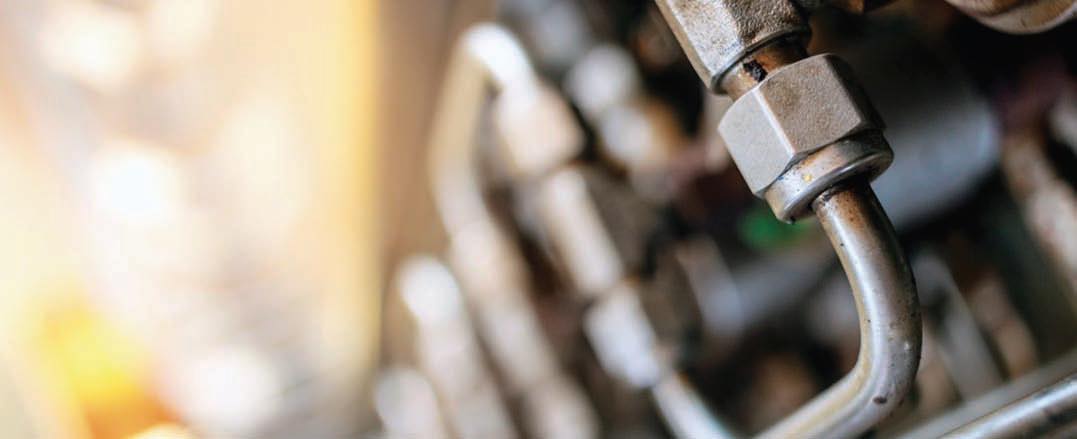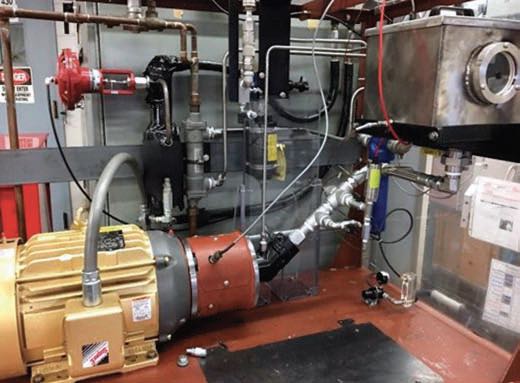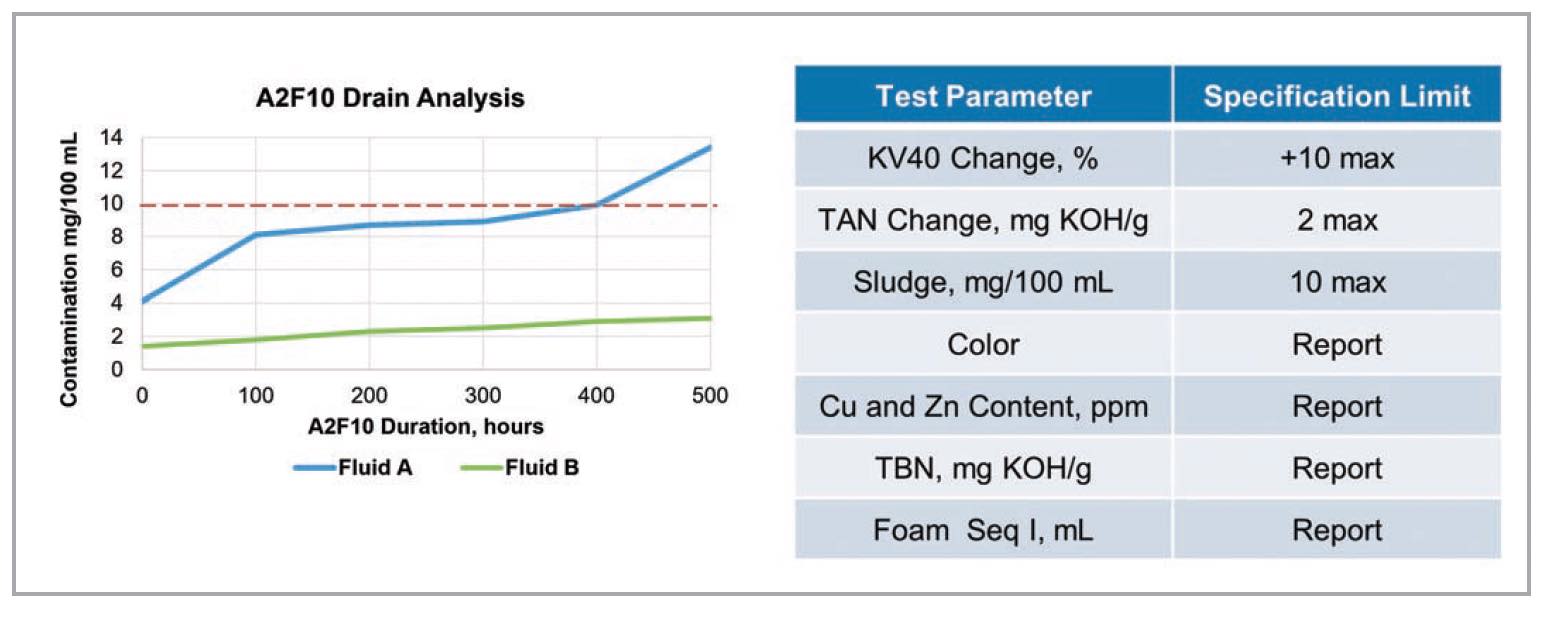The Lubrizol Corp.
Formulating for Longer Drain Intervals—and Lower Total Cost of Ownership
By Shubhamita Basu, Ph.D., North American Product Manager, The Lubrizol Corporation | TLT CMF Plus November 2023
Hydraulic equipment manufacturers, as well as end users, are seeking new ways to lower the total cost of ownership of their equipment. One way to make an impact is by extending the oil drain interval for hydraulic fluids—but it must be done with some important considerations.
Modern day original equipment manufacturers (OEMs) while designing and developing new hydraulic equipment give high priority to reduce the total cost of ownership (TCO) of their machines while increasing efficiency. Minimizing TCO is a need among hydraulic equipment operators and end users, as businesses seek to reduce variable costs and downtime within their operations while increasing productivity and reliability.
One key element of lowering TCO is to extend the oil drain interval (ODI)—the time a fluid can perform its task before it must be drained and replaced—as changing out the hydraulic fluid can be expensive. In addition to the cost, frequent oil changes can lead to increased downtime and reduced productivity. Additionally, there can be other hidden costs like maintenance scheduling, data entry, workforce planning, inventory management, work orders, and record keeping along with higher storage and handling costs for fluid as well as for disposals.
Extending ODIs can mean fewer overall fluid changes in an industry where only 40% of used oil is typically recovered or recycled. This in essence can lead to a reduction in carbon dioxide emissions and thus improving sustainability benefits.
However, expanding service interval is not easy considering the trends that are shaping modern hydraulic equipment. New machines are achieving increased power densities with higher pressure pumps, finer filtration, while reducing sump sizes and downsizing or outright eliminating coolers—all of which can create more challenging conditions for hydraulic fluids.
So, how can ODI be reliably extended? This article will explore the factors impacting fluid life, the complexities associated with accurately measuring anticipated oil life, and why maintaining necessary levels of performance is critical, irrespective of the length of service.
What Factors Impact Hydraulic Fluid Life?
Before determining ODI, it is important to understand the components that make up a hydraulic fluid.
A typical hydraulic fluid is made up primarily of a base oil, 0.6 wt.%-1.5 wt.% performance additives along with a pour point depressant (optional), and a viscosity modifier for multigrade fluids. The additive components of a fluid are formulated carefully to balance the levels of antiwear additives, oxidation inhibitors, metal deactivators, rust inhibitors, demulsifiers and antifoam agents to offer optimum performance.
A good hydraulic fluid must deliver the targeted levels of wear and corrosion protection as well as oxidation and thermal stability for reliable performance. In addition, elastomer compatibility and filterability are increasingly gaining more importance with the advent of newer elastomer materials and finer filtration in modern hydraulic systems. Ultimately, maintaining a robust tribofilm with optimized performance is the key for durable performance.
While in use, the components that are crucial for the performance and protection of the equipment can undergo thermal and oxidative degradation leading to sludge and varnish formation, impacting oil life. Harsh operating conditions and water ingress only aggravate the situation further. Smaller reservoir size can increase aeration leading to microdieseling which can be explained as a rapid pressure induced compression of an air bubble as it travels from a low pressure to a high pressure zone within the hydraulic system. As a result, localized heat is generated which leads to darkening of oil and oxidative degradation leading to sludge and varnish. Additionally, contaminants can block filters and ineffective filtration can impact oil life further. All these factors in varying degrees can limit the ODI of a hydraulic fluid in service.
 Predicting Fluid Life: A Testing Challenge
Predicting Fluid Life: A Testing Challenge
The operational challenges that have the potential to impact the service life of a hydraulic fluid can be complex and make establishing standard ODI difficult. In fact, there is no accepted industry standard for determining the service life of hydraulic fluids.
In the absence of a standard to determine ODI, two test methods – ASTM D943 and D4310 – are often used as predictors of oil life. In ASTM D943 or turbine oil oxidation stability test (TOST), the sample is treated with 17% water and iron/copper catalyst and heated to 95 °C under air flow for an extended period, and the change in acid number is measured over the duration of the test. The test is continued until the change in acid number exceeds 2 mg KOH/g or the test reaches 10,000 hours—whichever comes first. The precision of this test was determined using steam turbine oils and has poor repeatability and reproducibility. ASTM D4310, a modified version of the D943 test, uses the same test conditions but measures sludge after 1,000 hours. Since neither of these test methods mimic operating conditions of hydraulic fluids in the field and are not correlated to oxidation of hydraulic fluids in service, they are not suitable to predict oil life.
Unfortunately, in many instances TOST test is given a lot more importance as a predictor of oil life and fluids with high TOST numbers (above 7,000 hours) are considered better than those with lower TOST hours. However, TOST results by itself can be misleading. While formulators can easily influence TOST results the question becomes whether improving TOST result is necessary. It is important to note that TOST tests are impacted by base oil quality and base oils with higher levels of unsaturation and sulfur can hurt TOST results. For example, Group II base oils are expected to outperform Group I base oils in TOST tests and lower viscosity base oils can help attain higher TOST results than higher viscosity base oils. Additionally, ZDDPs or zinc dialkyldithiophosphates, one of the most ubiquitous and effective antiwear additive chemistries, tend to impact TOST results negatively; however, many leading OEMs prefer higher ZDDP treat rates for increased durability. Furthermore, a hydraulic fluid with a high TOST number doesn’t guarantee good pump performance which is the most important pre dictor of fluid performance in real world applications. Most leading OEMs put limited importance on the TOST test and consider it only as a screening tool and not a performance indicator. Bosch Rexroth RDE90235 specification, considered the most stringent hydraulic specification, requires fluids to meet only 1,500 hours in the TOST test while emphasizing on the extremely high pressure RFT-APU-CL pump-motor test.
The Piston Pump Test: A Better Service Lifetime Indicator
While TOST is not the best method, it does not mean there are not reliable methods that can show better correlation to ODI. The Rexroth A2F10 piston pump test has demonstrated immense potential to indicate hydraulic fluid service lifetime under field conditions. Unlike other pump tests that measure wear performance, the A2F10 test was developed by the Standardization Committee of Japan Construction Mechanization Association (JCMA) to measure sludging, oxidation and corrosion performance at elevated temperature and pressure using a 5,000-psi axial piston pump. Per the JCMAS P045 specification, fluids must be evaluated for 500 hours, with samples taken every 100 hours and measured for the parameters in the table above. The sample is considered to have failed the test if the limits have exceeded at any point during the test.

A passing 500-hour A2F10 test is correlated to about 2,000 hours of service life for a piece of construction machinery with a medium sump size and duty cycle. Test duration can be extended to indicate the potential robustness of ODI. However, it is important to note that actual ODIs may vary based on the size of the reservoir, as well as operating conditions, duty cycle and maintenance practices.
 The Key to ODI: Performance Retention
The Key to ODI: Performance Retention
Irrespective of the test method, it is critical to remember that establishing ODI for any hydraulic fluid must be based on its ability to retain critical performance characteristics over time.
It is important for OEMs and end users to be cautious when a fluid emphasizes only high TOST test performance. A high performing fluid should demonstrate strong all-round performance credentials, including broad OEM approvals and industry specifications. Passing results from service life tests like the A2F10 is also a good indicator that the fluid will deliver a long ODI while maintaining the optimum performance with minimal downtime. Proof of field performance can offer further confirmation of robust performance, and the TOST number needs to be considered with caution. For fluids in service, regular condition monitoring should check for maintained filterability, foam performance retention, robust water separation and antiwear levels so that measures can be taken before any catastrophic failures.
Lubrizol offers a breadth of products and solutions that can help maximize performance retention for longer ODI—helping to satisfy OEM and end user performance requirements and lower TCO. These include:
•
Lubrizol® 5703, a mainline zinc based hydraulic additive package with top-tier OEM credentials and proven field performance
•
Lubrizol® AH921ZF, a mainline ashless hydraulic additive package with OEM credentials
•
Lubrizol® 5687, Lubrizol® 5685, and Lubrizol® 5689, are a complete suite of ashless, biodegradable hydraulic finished fluids for applications in environmentally sensitive areas combining both environmental and performance credentials.
It is anticipated that OEMs will continue to seek ways to lower the TCO for new and evolving hydraulic machinery. Extending ODIs is important and possible only when the hydraulic fluid can retain its performance level over time and the right additive chemistry is essential to get there.
Lubrizol is continuously working to develop premium hydraulic additive and finished fluid solutions for worry free performance. We also apply our expertise to identify the most effective methods of evaluating critical performance characteristics. To learn more, visit
www.Lubrizol.com or contact your Lubrizol representative.